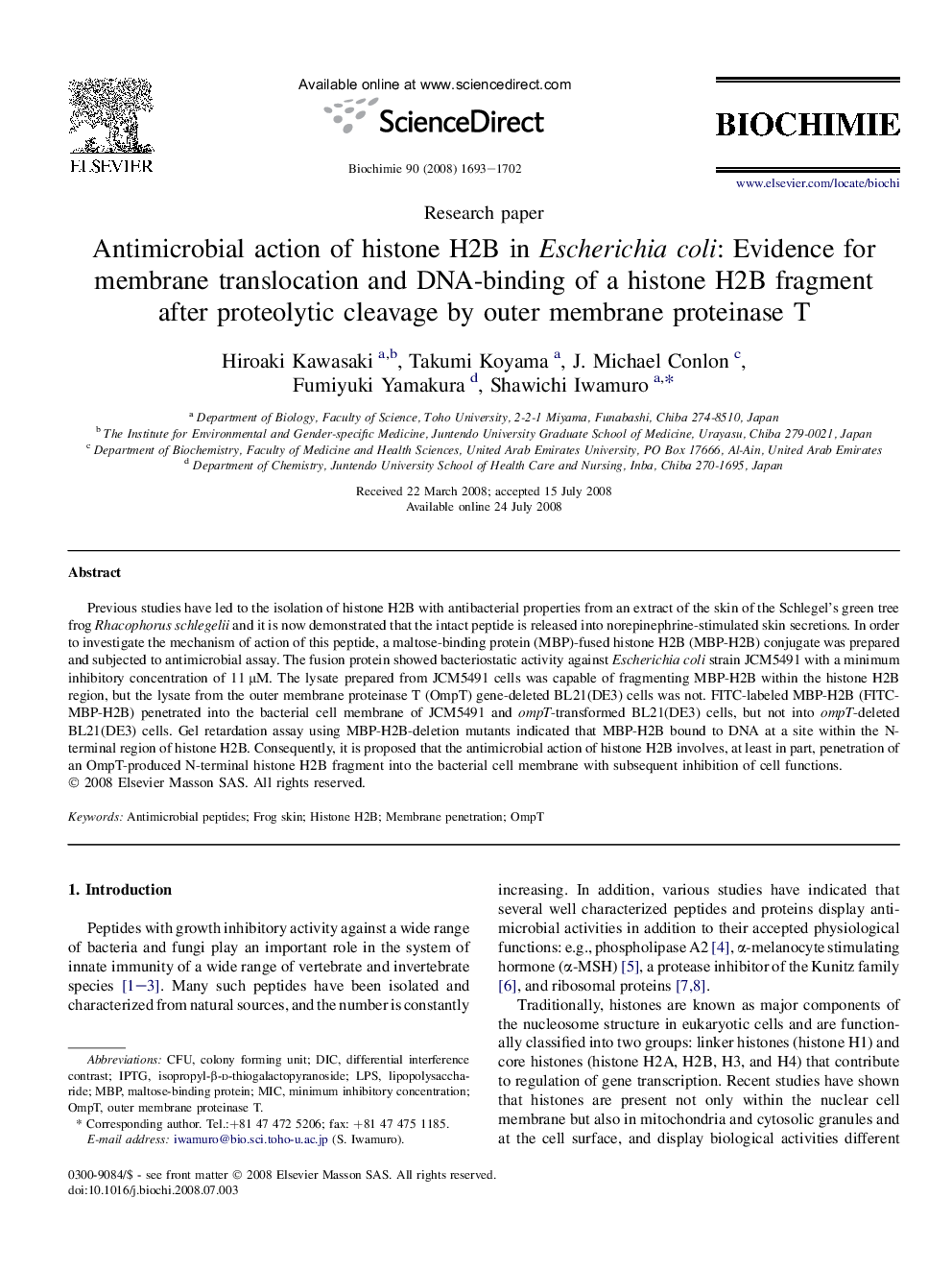| Article ID | Journal | Published Year | Pages | File Type |
|---|---|---|---|---|
| 1952670 | Biochimie | 2008 | 10 Pages |
Previous studies have led to the isolation of histone H2B with antibacterial properties from an extract of the skin of the Schlegel's green tree frog Rhacophorus schlegelii and it is now demonstrated that the intact peptide is released into norepinephrine-stimulated skin secretions. In order to investigate the mechanism of action of this peptide, a maltose-binding protein (MBP)-fused histone H2B (MBP-H2B) conjugate was prepared and subjected to antimicrobial assay. The fusion protein showed bacteriostatic activity against Escherichia coli strain JCM5491 with a minimum inhibitory concentration of 11 μM. The lysate prepared from JCM5491 cells was capable of fragmenting MBP-H2B within the histone H2B region, but the lysate from the outer membrane proteinase T (OmpT) gene-deleted BL21(DE3) cells was not. FITC-labeled MBP-H2B (FITC-MBP-H2B) penetrated into the bacterial cell membrane of JCM5491 and ompT-transformed BL21(DE3) cells, but not into ompT-deleted BL21(DE3) cells. Gel retardation assay using MBP-H2B-deletion mutants indicated that MBP-H2B bound to DNA at a site within the N-terminal region of histone H2B. Consequently, it is proposed that the antimicrobial action of histone H2B involves, at least in part, penetration of an OmpT-produced N-terminal histone H2B fragment into the bacterial cell membrane with subsequent inhibition of cell functions.
